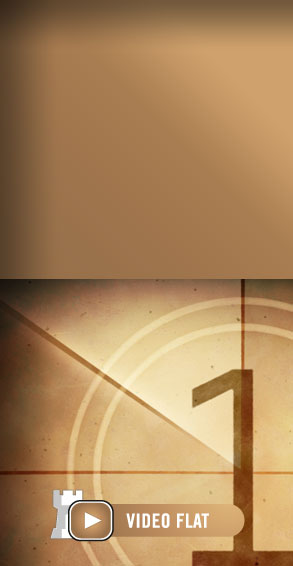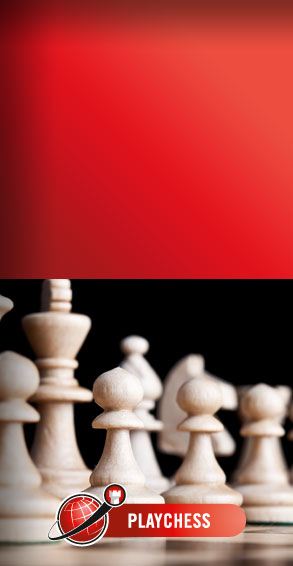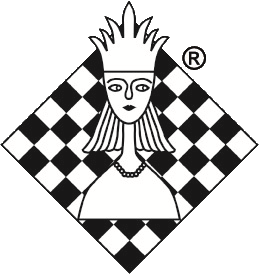A new generation
ChessBase Magazine 178

A new generation is on the rise in international chess. Nihal Sarin featured on the cover of this issue is the latest to join them. The young talent from India became an IM at the age of 12 years and 8 months. Currently he has a rating of 2471 and is training to become a grandmaster. That’s just by way of information to players who may be viewing this site for the first time.
Now a part of this DVD is devoted to interaction between him and ChessBase experts under the title, “How child prodigies think”. This shows him solving some tough positions in the middlegame and the endgame. If you are a young player you can also try your hand and see how you fare in these positions. Still questions remain:
“Is he all that good? How long would he last in a fiercely competitive chess scene today? Why only him? Why not others?”
There has already been a ceaseless debate along these lines on this news page. I would strike a note of caution and follow a policy of “wait and watch”. It’s too early to pronounce a judgment. Time will tell.
This brings me to the contents of this issue: It includes games from the Grenke Chess Classic, Gashimov Memorial and Zürich Chess Challenge. There are also games from other events like the Russian Team Championship, USA Championship and the Bundesliga 2016-2017 season.
The Grenke Chess Classic marked the return of Levon Aronian who finished with 5½ out of 7, ahead of Carlsen and Caruana with 4 out of 7 points. In this issue the tournament winner himself annotates his win over Naiditsch. However, the pride of place belongs to the Carlsen-Aronian encounter from the second round.

Carlsen and Aronian at play | Photo: grenkechessclassic.com
The young GM Aleksandr Lenderman recently won the U.S. Open with a score of 8.0/9. On occasion I have differed from his analysis and added a little more explanation for readers not familiar with theory. How should this game be viewed? I would strongly advise the readers to see it first without any analysis and then match their wits with the players and the annotators.

[Event "Grenke Chess Classic"] [Site "?"] [Date "2017.04.16"] [Round "?"] [White "Carlsen, Magnus"] [Black "Aronian, Levon"] [Result "1/2-1/2"] [ECO "C88"] [WhiteElo "2838"] [BlackElo "2774"] [Annotator "Alexandr Lenderman/Nagesh Havanur"] [PlyCount "140"] [EventDate "2017.??.??"] 1. e4 e5 2. Nf3 Nc6 3. Bb5 a6 4. Ba4 Nf6 5. O-O Be7 6. Re1 b5 7. Bb3 O-O 8. a4 ({Carlsen avoids the Marshall Attack in which Aronian is an expert.} 8. c3 d5) 8... b4 {This move owes much to Grischuk who has played it time and again.} ({ Two months later Carlsen himself played} 8... Bb7 9. d3 d5 {(shades of Marshall!)} 10. exd5 Nxd5 11. Nbd2 (11. axb5 axb5 12. Rxa8 Bxa8 13. Nxe5 Nd4 $5 ({After} 13... Nxe5 $6 14. Rxe5 {Black has less compensation for the pawn.}) 14. c3 Nxb3 15. Qxb3 {is good for White. But Caruana, Carlsen's opponent did not want to take chances.}) 11... f6 {against Caruana in Stavanger (Norway) 2017 and the game was a hard-fought draw.}) 9. d3 ({Carlsen had played} 9. d4 { against Aronian in Sinquefield Cup 2013 and won after a long ending. That was four years ago.}) ({In the more recent Sinquefield Cup 2017 he tried} 9. a5 d6 10. d3 Be6 11. Bxe6 fxe6 {and beat Aronian in a tense battle.}) 9... Bc5 $5 { A paradoxical move. Black is ready to move the bishop again to control d4 now that White's own development is slower.} (9... d6 {is standard.}) 10. c3 $146 ( {Carlsen has no intention of giving chances to his opponent with a sequence like} 10. Nxe5 Nxe5 11. d4 Nfg4 12. Rf1 (12. dxc5 $4 Qh4 $19) 12... Ba7 13. h3 Nc6 14. Qxg4 Nxd4 $15) (10. Be3 Bxe3 11. Rxe3 d6 {led to a draw in Yu Yangyi-Aronian, Doha 2016.}) 10... bxc3 11. bxc3 Rb8 12. Bg5 $5 {Ambitious play. Reminding Black that he has to put up with the pin on the knight now that the bishop has moved away from his post on e7.} (12. Nbd2 {is safer.}) 12... h6 (12... d6 {followed by...Bg4 is an alternative.}) 13. Bh4 g5 {Bold play, breaking up his own kingside} 14. Bg3 ({If White tries the speculative sacrifice} 14. Nxg5 $2 hxg5 15. Bxg5 {Black can respond with} Rxb3 $1 (15... Be7 {needlessly gives chances to White after} 16. Re3) 16. Qxb3 Bxf2+ 17. Kxf2 Ng4+ 18. Kg1 Qxg5 {A nice line given by Lenderman. However, his assessment that Black is completely winning is a bit too optimistic. It is better developed and has a strong attack, though.}) 14... Nh5 {Aronian took less than 10 minutes for these three moves (...h6, g5 and...Nh5). In contrast Carlsen took as many as 20 minutes for an obvious-looking move.} 15. Nbd2 {By all accounts it was well-spent.} ({One line that he considered and rejected was} 15. Nxe5 {. Now Lenderman gives} Nxg3 16. Nxc6 dxc6 17. d4 (17. hxg3 Rxb3 $1 18. Qxb3 Qxd3 19. Qd1 Qxg3 20. Qf3 Qxf3 21. gxf3 Rd8 $44) 17... Nxe4 18. Rxe4 Bd6 19. Nd2 c5 $11) 15... Nxg3 16. hxg3 Qf6 $1 ({Better than} 16... g4 17. Nh4 ({Lenderman's} 17. Nh2 h5 18. Nxg4 hxg4 19. Qxg4+ Kh8 20. Qh5+ $11 {is rather tame.}) 17... Qg5 $11) 17. Nc4 d6 18. Ne3 Be6 19. Bxe6 {Played after about 25 minutes of thought. Carlsen was not unaware of the dangers of activating the rook on f8.} ({Better is} 19. Nd5 Bxd5 20. Bxd5 Ne7 21. Bc4 {On} g4 22. d4 { is satisfactory.}) 19... fxe6 20. Qc2 ({Here Lenderman offers an interesting suggestion,} 20. g4 $5 Qf4 21. Qc2 Bxe3 22. Rxe3 Qxg4 23. Qa2 $44 {with compensation. White has activated the queen and prepares for an advance in the centre while Black suffers from a weakened kingside.}) 20... h5 21. Rab1 Rxb1 22. Rxb1 h4 ({Computers prefer} 22... g4 {targeting f2. However, the picture is not clear after} 23. Nh4 {as pointed out by Lenderman.}) 23. gxh4 gxh4 24. Rb7 {This move could have waited.} ({Lenderman's idea,} 24. Nh2 {preparing Ng4 deserves attention. It takes the sting out of kingside threats by Black.}) 24... h3 $2 {Aronian is all out to attack. But this move is hasty.} (24... Rf7 {defending the pawn is only level.}) ({Lenderman gives} 24... Qg7 $1 25. Qe2 ( 25. Nxh4 $2 Bxe3 26. fxe3 Qg3 $19) ({Opening up the centre with} 25. d4 exd4 26. cxd4 {only helps Black to activate the queen and the rook.} Nxd4 27. Nxd4 Qxd4 28. Rxc7 Qa1+ 29. Kh2 Bxe3 30. fxe3 Rf1 31. Rc8+ Kf7 32. Rc7+ Kf6 33. Qc3+ Qxc3 34. Rxc3 Ke5 35. Rc6 a5 36. Ra6 Kxe4 37. Rxd6 e5 38. Rh6 Kxe3 39. Rxh4 e4 $17) 25... h3 26. g3 Bb6 27. Nh4 Na5 28. Rxb6 cxb6 29. Qh5 $132) 25. Rxc7 hxg2 {Now both knights are under attack!} 26. Qe2 Ne7 $1 27. Ne1 $1 ({not} 27. Kxg2 $2 Ng6 $19) 27... Rb8 $2 {This move is risky and might have lost.} (27... Rf7 { both defends and attacks along the second rank.}) ({Lenderman prefers} 27... Qh6 28. N1xg2 {after which} Rf7 {has to be played any way.}) 28. Qg4+ $2 ({ After} 28. N1xg2 Rb1+ 29. Nf1 Ng6 $44 {White is on the defensive.}) ({He could have won with} 28. Qf3 $1 Qxf3 29. Nxf3 Ng6 30. Ng4 $1 ({If} 30. Nxg2 $2 Rb1+ $11) ({Or} 30. Kxg2 Nf4+ 31. Kg3 Bxe3 $1 {The knight must go. Otherwise it would join ranks with the rook after Ng4.} 32. fxe3 Nxd3) 30... Kf8 (30... Nf4 $4 31. Nf6+ $18) 31. Kxg2 Nf4+ 32. Kh2 Rb3 33. Ng5 Ke8 34. Nf7 $18) 28... Ng6 $2 {Lenderman states, this obvious "attacking" move is wrong.} ({Instead he offers} 28... Kf8 $1 {trapping the rook with...Ke8 and...Kd8.} 29. Qf3 Qxf3 30. Nxf3 Ke8 31. d4 Bb6 32. Rc4 exd4 33. cxd4 Kd7 $11) 29. Nf3 {preparing the coming pawn advance} (29. N1xg2 {is met by} Kf8 $1 {unpinning the knight.}) 29... Rb2 $2 {Aronian is still in the the attacking mode, ignoring the adage, "Your opponent also has plans for you."} ({Lenderman's idea is still valid here. By} 29... Kf8 $1 {Black can defend e5 with the help on the knight on g6 if White plays d4.}) 30. d4 $1 ({not} 30. Kxg2 $4 Bxe3 $19) 30... exd4 31. e5 { The point.} dxe5 32. Nc4 Rb1+ 33. Kxg2 {White only has to play 34.N(4)x e5, everything would be fine. He is in for a surprise.} e4 $1 {a brilliant pawn sacrifice freeing the knight for attack} (33... dxc3 $2 34. Rxc5 c2 35. Rc8+ Kg7 36. Ncxe5 c1=Q 37. Rxc1 Rxc1 38. Nxg6 $18 {is hopeless for Black as pointed out by Lenderman.}) 34. Qxe4 $2 {It's hard to believe that this obvious recapture can be wrong.} ({He could have crowned his play with} 34. Nfe5 $1 dxc3 (34... e3 $2 {loses to} 35. Rf7 $18) 35. Rxc5 c2 36. Rc8+ Kg7 37. Nd6 $1 Qxe5 38. Rc7+ $18) 34... Nf4+ 35. Kg3 Ne2+ $3 ({If} 35... Nh5+ $2 36. Kg4 $18) 36. Kg4 $1 {Unafraid of ghosts and playing for a win} (36. Qxe2 $2 Qg6+ 37. Kf4 (37. Kh3 $2 Rh1+ 38. Nh2 Qh6+ 39. Kg4 Rg1+ $19) 37... Qf5+ 38. Kg3 $11 {Draw by perpetual check}) 36... Qf5+ 37. Qxf5 exf5+ 38. Kxf5 dxc3 $1 { A stunning move just before the time control is reached.} 39. Rxc5 c2 40. Rc8+ Kg7 41. Rc7+ Kg8 42. Kf6 Rg1 $1 {A brilliant sacrifice, deflecting the knight from g5 and preventing White from weaving a mating net.} (42... c1=Q $2 43. Rc8+ Kh7 44. Ng5+ Qxg5+ 45. Kxg5 $16 {and White is a healthy pawn up.}) 43. Nxg1 c1=Q 44. Nxe2 {An extraordinary position with an unusual balance of material. With rook, two knights and an extra pawn against the lone queen White should win. However, loose pieces fall off as John Nunn once put it. So soon it's only rook, knight and pawn.} Qh6+ $1 45. Ke7 ({Or} 45. Ke5 Qh5+ $11 { White cannot escape from checks.} ({But not} 45... Qh2+ $2 46. Nf4 Qxf2 47. Nd6 $18)) 45... Qh7+ 46. Kd6 Qd3+ 47. Kc5 Qxe2 48. Kb6 Qxf2+ 49. Kxa6 {Now Black has to find a way to stop the advance of the pawn, giving checks with the queen.} Kf8 {The king also lends a hand.} 50. a5 {That's the last advance of the pawn. For the rest of the game game he is not able to make progress.} Ke8 51. Nb6 ({Making way for the passed pawn does not help.} 51. Kb7 Qg2+ $11) 51... Qf5 52. Rd7 Qc5 53. Rh7 Qe5 54. Rd7 Qc5 55. Rd5 Qc6 56. Rh5 Qc3 57. Kb7 Qg7+ 58. Ka6 Kd8 59. Rd5+ Kc7 $1 {Levon has not lost his sense of humour in this final phase of a fierce battle.} 60. Rd7+ Kb8 61. Rd8+ (61. Rxg7 {is stalemate.}) 61... Kc7 62. Rc8+ Kd6 63. Nc4+ Kd7 64. Rc5 Qg1 65. Kb6 Qb1+ 66. Ka7 Qb4 67. Nb6+ Kd6 68. Rh5 Kc6 69. Rh6+ Kb5 70. Rh5+ Kc6 1/2-1/2
An incredible battle and Lenderman’s detailed commentary is worthy of attention.

The game is annotated in depth by Aleksandr Lenderman | Photo: Vanessa Sun
The Shamkir Chess (a.k.a. The Vugar Gashimov Memorial) Tournament was won by Shakhriyar Mamedyarov ahead of Wesley So, Veselin Topalov and Vladimir Kramnik. It’s not easy to cope with Shakhriyar’s hussar-style attacks. Kramnik was overcautious and outplayed by the tournament winner.

Shakhriyar Mamedyarov vs Vladimir Kramnik in round six of the Gashimov Memorial 2017 | Photo: shamkirchess.az
However, he redeemed himself with an imaginative rook sacrifice against Harikrishna. In this issue the game is annotated by Tiger Hillarp-Persson. CBM 178 also includes games from the U.S. Championship and Bundesliga 2016-2017, a number of them annotated.

It was good to see both the Rapid and Blitz games from Zürich Chess Challenge won by Nakamura ahead of Nepomniachtchi, Anand and Kramnik. In this issue the winner himself annotates his game against Ian Nepomniachtchi who placed second. In my view this tournament deserved greater coverage with more highlights and annotated games.
This brings me to other sections of the Magazine. There are 13 opening surveys ranging from the Sicilian to the Slav. This time the French players are spoilt for choice with three surveys on the defence. Here I shall single out the analysis by Nadezhda Kosintseva (right) of 4.Nge2, an interesting gambit against the Winawer.
The line itself has a chequered history. It was introduced by Geza Maroczy against Jakob Seitz in Hungarian Chess Congress 1924.

Géza Maróczy, in 1906
Subsequently it was adopted by Alekhine who beat Nimzowitsch in a miniature in Bled 1931. Alekhine essayed it again in two games of World Championship Match 1935 against Max Euwe with a good score, +1, -0, =1.

Alekhine vs. Euwe | Photo: Netherlands Photo Archives
In recent days it has been played by attacking players like Gawain Jones and Jobava with varying results.

While I was perusing Kosintseva’s survey, I was intrigued by the following encounter. It employs an idea discovered by a French WIM, Sophie Milliet (above with teammate, Maxime Vachier-Lagrave). She had used the TN with success against Anna Rudoph in Saint-Quentin 2012. Two years later Jaroslav Polasek went on to follow the same line, met tougher resistance and lost! Kosintseva shows where he could have gained the upper hand, but leaves it to the reader to find out what went wrong afterwards.

[Event "TCh-CZE Zapad 2013-14"] [Site "?"] [Date "2014.03.16"] [Round "?"] [White "Polasek, J."] [Black "Cech, P."] [Result "0-1"] [ECO "C15"] [WhiteElo "2318"] [BlackElo "2389"] [Annotator "Nadezhda Kosintseva/Nagesh Havanur"] [PlyCount "103"] [EventDate "2014.??.??"] 1. e4 e6 2. d4 d5 3. Nc3 Bb4 4. Nge2 {An idea of Geza Maroczy, a great Hungarian master who first played it against Jakob Seitz back in 1924 and won. White avoids the doubled pawns arising out of...Bxc3} dxe4 ({Among other options} 4... Nf6 {has not had good results.}) (4... Nc6 $13 {preserving tension in the position is a major alternative analysed in this issue.}) 5. a3 Bxc3+ (5... Be7 6. Nxe4 Nc6 {was tried twice in World Championship 1935, with Alekhine (White) scoring a win and a draw against Euwe.} ({Along with this line } 6... Nf6 {is also in vogue today.})) 6. Nxc3 Nc6 ({An historic game took the following course,} 6... f5 $6 7. f3 $1 exf3 8. Qxf3 Qxd4 9. Qg3 Nf6 10. Qxg7 Qe5+ 11. Be2 Rg8 12. Qh6 Rg6 13. Qh4 Bd7 14. Bg5 Bc6 15. O-O-O Bxg2 16. Rhe1 Be4 17. Bh5 Nxh5 18. Rd8+ Kf7 19. Qxh5 {1-0, Alekhine-Nimzowitsch, Bled 1931.}) 7. d5 (7. Bb5) 7... exd5 8. Qxd5 Qxd5 (8... Be6 {is standard.}) 9. Nxd5 Nd4 ({ If} 9... Kd8 $2 10. Bf4 $16) 10. Nxc7+ Kd8 11. Bg5+ $1 {The idea of this sacrifice belongs to the French player, Sophie Milliet.} Kxc7 ({Or} 11... Ne7 12. O-O-O Kxc7 13. Bf4+ Kb6 14. Rxd4 $16) 12. Bf4+ $1 Kc6 13. O-O-O Nf5 {forced } (13... Nb5 {loses to} 14. a4 Nc3 15. bxc3 Ne7 (15... Nf6 $4 16. Bb5+ Kb6 17. Rd6+ $18) 16. Rd6+ $16) ({Or} 13... Ne6 $2 14. Rd6+ Kc7 15. Rxe6+ $18) 14. g4 g5 ({After} 14... b6 $2 15. gxf5 {White won too easily in the game, Sophie Milliet-Anna Rudolph, Saint-Quentin 2012.}) 15. Bxg5 Nd6 16. Bf4 Ne8 17. Rd8 Ngf6 18. g5 {This move is not bad. But it could have waited.} ({Stronger is} 18. Bg2 $16 {with threats of Bxe4+ as well as g4-g5.}) 18... Nd5 19. Be5 Rg8 20. Bc4 Ndc7 21. Bxf7 Rf8 22. Bxe8+ Nxe8 23. Re1 b5 24. Re3 Kb7 25. Bd6 Nxd6 26. Rxf8 $16 Bf5 27. Rxa8 Kxa8 {If White creates a passed pawn on the kingside, he can win. Curiously, his play becomes indecisive from now on.} 28. Rc3 { This move does not spoil anything.} ({not} 28. Kd2 $4 Nc4+ $19) ({However, the thematic} 28. h4 $1 Bg6 ({If} 28... Nc4 $2 29. Rb3 {gaining a tempo for advancing the h-pawn} a6 30. h5 $18 {followed by Rg3 should win.}) 29. Rh3 $16 {is strong.}) 28... Kb7 29. b3 Kb6 30. Kd2 a5 31. Rg3 ({not} 31. Ke3 $4 b4 32. axb4 axb4 $19) 31... Bg6 32. h4 Bh5 33. Rh3 Nf5 34. b4 $2 {This move only allows the Black pawn to advance and makes his own pawn on a3 a target.} (34. Kc3 {preparing to advance on d4 deserves attention.}) 34... a4 35. Rc3 $2 { This move loses the h-pawn for nothing.} (35. Kc3 {was still available.}) 35... Nxh4 36. Ke3 Bg6 37. Kf4 Nf3 38. Rc8 ({It's a choice of evils for White. If he tries to prevent...Nd2-b1 followed by...Nxa3 with} 38. Ke3 {he loses the g-pawn. After} Nxg5 {Black's h-pawn is ready to advance.}) 38... Nd2 39. Rb8+ ( {Or} 39. Ke5 e3 $1 (39... Nb1 $2 40. Kd6 Nxa3 41. Rb8+ Ka7 42. Kc7 $11) 40. fxe3 Nb1 $17) 39... Kc6 40. Rc8+ Kb6 {gaining time on the clock} ({The immediate} 40... Kb7 {is also possible.}) 41. Rb8+ Kc6 42. Rc8+ Kb7 43. Rc5 Kb6 44. Ke5 Nc4+ 45. Ke6 e3 $1 {clearing the path for the bishop} 46. fxe3 Nxa3 47. Kd7 Be4 {The point of his 45th move. Now there are no more checks.} 48. Re5 Bc6+ 49. Kc8 Nxc2 50. Re7 a3 51. Kb8 {Trying to get his rook to a7. But it's too late.} (51. Rxh7 $4 a2 $19 {The pawn promotes to queen as the White rook can neither reach a7 or h1 to stop the same.}) 51... a2 52. g6 {After this desparing gesture White resigned.} 0-1
This game is a cautionary tale. It’s important to consolidate your open from the opening in the middlegame and the endgame.

Apart from these surveys, there are regular exercises in opening traps, middle game tactics and endgame technique. I would like to make a special mention of the essay by Mihail Marin (right) on Sicilian strategy for both White and Black. As is known, Marin is a connoisseur of chess classics. The following position is taken from the second game of World Championship Match 1985. While the game itself ended in a tense draw, Marin shows how White missed a nuance that could have set greater problems for Black. Here A few words on this position may not be out of place. It arose out of the Sicilian Scheveningen, a regular battleground in Karpov-Kasparov World Championship Matches.

Garry Kasparov vs Anatoly Karpov, World Championship 1985 [photo Russian7.ru]
Until then Karpov had adopted the same plan, establishing a bind on the queenside before turning attention to the kingside. He was nearly invincible with this strategy winning a number of games. During the 1984 and 1984 Matches Kasparov sought to undermine this strategy with a dynamic demonstration of his own, taking extraordinary risks. Before you find an overview of the opening itself (it’s at the end of this review) you may try and figure out what White should play. Your move!
This brings us to the current issue. There are as many as 1169 OTB games of which 101 are annotated. That looks like a small number. But there is a lot to work on. Of late I have missed the Telechess section. Hopefully, the grandmasters would be back next time to present games from correspondence chess.
The solution to Marin’s Test on Strategy and a more detailed examination of the position is to be found in this commentary the World Championship Match 1985:

[Event "World Championship 32th-KK2"] [Site "?"] [Date "1985.09.05"] [Round "?"] [White "Karpov, Anatoly"] [Black "Kasparov, Garry"] [Result "*"] [ECO "B85"] [WhiteElo "2720"] [BlackElo "2700"] [Annotator "Mihail Marin/Nagesh Havanur"] [PlyCount "129"] [EventDate "1985.??.??"] {Before this second game of the 1985 World Championship Match Kasparov, winning the first led by a score of 1-0. It was imperative for the champion to try and level the scores.} 1. e4 c5 2. Nf3 d6 3. d4 cxd4 4. Nxd4 Nf6 5. Nc3 a6 {This is the Najdorf move order.} 6. Be2 e6 {Transposing to Scheveningen that became a major theoretical battle in Karpov-Kasparov World Championship Matches, 1984 and 1985.} 7. O-O Be7 8. f4 O-O 9. Kh1 Qc7 10. a4 (10. Qe1 { followed by 11.Qg3 is the other line.}) 10... Nc6 11. Be3 Re8 {Black prepares.. .Bf8 and free the position with a pawn advance in the centre.} 12. Bf3 ({ After years of practice, Gennady Kuzmin's idea,} 12. a5 $5 {(deflecting the knight from c6) is proved inadequate. But Black has to tread carefully on a mine field.} Nxa5 13. e5 {Opening up lines in the centre and drawing the queen to a vulnerable position} dxe5 14. fxe5 Qxe5 15. Bf4 Qc5 16. Na4 Qa7 17. Be3 b6 18. b4 Nd5 19. Bg1 Nxb4 $17 20. Bh5 g6 21. Nxb6 Qxb6 22. Nf5 {A picturesque position!} Qxg1+ $1 23. Kxg1 exf5 24. Rxa5 gxh5 25. Qxh5 Bf6 $17 ({instead of} 25... Be6 $2 {that allowed} 26. Raxf5 $1 Bxf5 27. Qxf5 {with counterchances for White that led to a draw in Escalante Ramirez-Cori Quispe, Lima 2016.})) 12... Rb8 (12... Bd7 {with the idea of ...Nxd4 followed by ...Bc6 is met by} 13. Nb3 {followed by g4-g5 forcing the bishop to retreat to c8 and the knight to d7.}) 13. Qd2 Bd7 {An improvement on his previous play.} ({In the 45th game of the aborted 1984-85 World Championship Match Kasparov had played} 13... Nxd4 {and after} 14. Bxd4 e5 15. Ba7 Ra8 16. Be3 Bd7 17. a5 {White fared better, though the game itself was a draw.}) 14. Qf2 {Played after a long think of half an hour.} ({In the last game of the Match Karpov played} 14. Nb3 { avoiding simplification with ...Nxd4. While he lost this historic encounter, ceding the championship title, the line is still in vogue.}) 14... Nxd4 15. Bxd4 e5 16. Be3 {Now it was Kasparov's turn for long reflection. After half an hour's thought he produced} Be6 $6 {an ambitious move not without dangers} ( 16... exf4 $1 17. Bxf4 Be6 {preparing...Nd7 is level.}) ({The little-played} 16... Rbc8 {is more thematic.} 17. Rad1 ({If} 17. Bb6 Qc4 $15) 17... Qc4 $13) 17. f5 Bc4 {The bishop has placed himself in a precarious position as White can prepare and play b2-b3 trapping the piece.} ({Young Garry wouldn't have "chickened out" with} 17... Bd7 $2 {. It would be bad any way as White initiates an expansion on the kingside with} 18. g4 $16) 18. Bb6 Qc8 {[#] Finally, we have reached the test position set by Mihail Marin in this issue.} 19. Rfc1 $2 {Karpov pondered over this move for more than 20 minutes. Probably he thought this move would neutralize the pressure on c-file. As it turned out, he was wrong.} ({Soon after the game Taimanov and Averbakh pointed out the correct move,} 19. Rfd1 $1 {exerting pressure on the d-file. This was endorsed by Kasparov himself. In this issue Marin makes the same point. Now if} d5 20. exd5 Bb4 ({Or} 20... Qxf5 21. d6 e4 22. dxe7 exf3 23. Rd8 fxg2+ 24. Kg1 Qg4 25. Rad1 $16) 21. Ne4 Qxf5 22. Nxf6+ Qxf6 23. b3 e4 24. bxc4 ({probably clearer than Kasparov's} 24. Bd4 {cited by Marin}) 24... exf3 25. Bc7 fxg2+ 26. Qxg2 Rbc8 27. d6 $16) 19... d5 $1 20. b3 Bb4 21. Na2 Ba3 22. bxc4 Bxc1 23. Nxc1 Qxc4 $132 {It's beyond the scope of this review to comment on the entire course of this fluctuating struggle. For the record here is the rest of the game.} 24. exd5 e4 25. Be2 Qxc2 26. Qd4 Rbc8 27. h3 e3 28. d6 Qd2 29. Nd3 Qxe2 30. d7 Nxd7 31. Qxd7 Qd2 32. Re1 e2 33. Kg1 a5 34. g3 Qh6 35. Bf2 Qc6 36. Qxc6 Rxc6 37. Rb1 Rc4 38. Rxb7 Rxa4 39. Be1 Ra3 40. Rd7 a4 41. Kf2 Rb3 42. Nc1 Rb1 43. Na2 Ra8 44. Re7 Rb2 45. Rxe2 Rxe2+ 46. Kxe2 Re8+ 47. Kf2 h5 48. Bc3 Rb8 49. Bb4 Rd8 50. Ke2 a3 51. Bc3 f6 52. Bb4 Kf7 53. Nc3 Rb8 54. Na2 Rb5 55. g4 Rb8 56. Kd3 Rd8+ 57. Kc4 Rd1 58. Bxa3 Ra1 59. Kb3 Rh1 60. gxh5 Rxh3+ 61. Nc3 Rf3 62. Bc1 Rxf5 63. h6 g6 64. Ne4 Rh5 65. Bb2 *
ChessBase Magazine 178: recommended.
Enjoy the best moments of recent top tournaments (Shamkir, Baden-Baden, US Champs) with analysis of top players. In addition you'll get lots of training material. For example 12 new suggestions for your opening repertoire.
All opening articles in ChessBase Magazine #178
 |
Papp: Scandinavian B01 (Recommendation for White):
1.e4 d5 2.exd5 Nf6 3.d4 Nxd5 4.Nf3
Although the world champion himself did not win against this variation (against Adhiban, Wijk 2017), Petra Papp convincingly shows that White can count on a nice advantage with this line of the Scandinavian. |
 |
Schandorff: Caro-Kann B19 (Recommendation for Black): 1.e4 c6 2.d4 d5 3.Nc3 dxe4 4.Nxe4 Bf5 5.Ng3 Bg6 6.h4 h6 7.Nf3 e6 8.Ne5 Bh7 9.Bd3 Bxd3 10.Qxd3 Nd7
Instead of the usual 7...Nd7 to take control of the e5-square, 7...e6!? allows the knight sortie. In the position in the diagram the usual move is 11.f4 upon which Lars Schandorff recommends 11...Be7, immediately attacking the h4-pawn. White seems to have no chance of an advantage. |
 |
Stohl: Sicilian B55 (Recommendation for Black): 1.e4 c5 2.Nf3 d6 3.d4 cxd4 4.Nxd4 Nf6 5.f3 e5 6.Nb3 d5
A safe counter against the Najdorf-avoiding variation 5.f3 is offered by Igor Stohl in the form of the immediate counterthrust in the centre. Above all, after the required 7.Bg5 you immediately have in 7...Be6 and 7...d4 two good possibilities to get a satisfactory game. |
 |
Ris: Sicilian B76 (Recommendation for White):
1.e4 c5 2.Nf3 d6 3.d4 cxd4 4.Nxd4 Nf6 5.Nc3 g6 6.Be3 Bg7 7.f3 Nc6 8.Qd2 0-0 9.0-0-0 d5 10.Qe1
As Robert Ris demonstrates in his article, White can count on a safe advantage when facing 10...e6. But a more critical move is 10...e5, though even then things are not easy for Black. But perhaps he can keep things on a level keel with a rarely played move. |
 |
Souleidis: French C01 (Recommendation for White): 1.e4 e6 2.d4 d5 3.Bd3
Georgios Souleidis explains that this is of course only a surprise weapon. Black ought to be able to equalise in several ways, but the author’s investigations also make it clear that there are still some blanks in the theory of this variation. |
 |
Kosintseva: French C15 (Recommendation for White): 1.e4 e6 2.d4 d5 3.Nc3 Bb4 4.Nge2
In the Alekhine Gambit there have in recent years been a few new developments which Nadezhda Kosintseva examines in detail. Black can equalise of course, but in doing so he should not under-estimate the difficulties which crop up. |
 |
Lampert: Scotch C45 (Recommendation for Black): 1.e4 e5 2.Nf3 Nc6 3.d4 cxd4 4.Nxd4 Bc5 5.Be3 Qf6 6.c3 Nge7 7.Bc4 0-0 8.0-0 b6
As Jonas Lampert establishes, 8...b6 has almost completely replaced the older 8...Bb6. From Black’s point of view what is especially attractive is the fact that 9.f4?! is the most frequently played move, but that after 9...d5! Black is the one at the steering wheel. |
 |
Szabo Ruy Lopez C63 (Recommendation for White): 1.e4 e5 2.Nf3 Nc6 3.Bb5 f5 4.d3
Compared to the more frequently played 4.Nc3 the move 4.d3 looks really tame. But in his repertoire suggestion Krisztian Szabo shows that White can count on a secure advantage in all lines. |
 |
Kuzmin: Slav Defence D15 (Recommendation for White): 1.d4 d5 2.c4 c6 3.Nf3 Nf6 4.e3 Bf5 5.Nc3 a6 6.Bd2
The position is also often reached via 4.Nc3 a6. The rarely seen bishop move has been played above all by Nikita Vitiugov. As Alexey Kuzmin shows in his article on the DVD, White has excellent chances of getting a small opening advantage. |
 |
Postny: Queen's Indian E12 (Recommendation for Black): 1.d4 Nf6 2.c4 e6 3.Nf3 b6 4.a3 Bb7 5.Nc3 d5 6.cxd5 Nxd5 7.e3 g6
With the fianchetto move 7...g6 Black is aiming for positions which are reminiscent of the Grünfeld Defence. Evgeny Postny is of the opinion that White is well advised to react dynamically. Nevertheless, in each case Black has several possibilities for equalising. |
 |
Quintiliano: King's Indian E94 (Recommendation for White): 1.d4 Nf6 2.c4 g6 3.Nc3 Bg7 4.e4 d6 5.Nf3 0-0 6.Be2 e5 7.0-0 Na6 8.Be3 Ng4 9.Bg5 Qe8 10.Re1
Renato Quintiliano advocates a variation for White which Dejan Bojkov had already examined six years ago in CBM 141, but on that occasion from the point of view of Black. But recent developments permit the conclusion that White can get an advantage. |
Buy ChessBase Magazine 178 in the ChessBase Shop
























